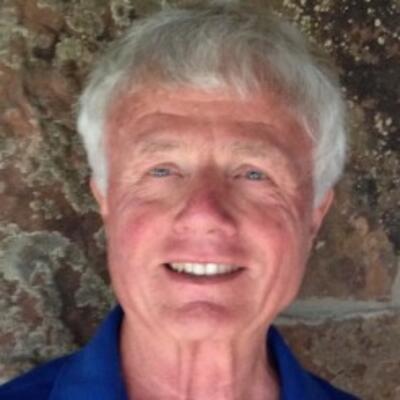Presidents column: September 2018
As Conference Season Sets in, Solar Technologies Show Ever-Growing Strength in the Marketplace
It is September, and the renewable energy conference season is in full swing, with ISES playing many important roles. I was pleased to be able to address the participants at the closing session of our own successful EuroSun 2018 Conference in Rapperswil, Switzerland on 13 September. EuroSun conferences are held every second year in a European location and provide an ideal venue for researchers, both from within Europe and internationally, to share their work and learn how their work supports renewable energy programs around the world. I want to especially thank Wolfgang Streicher and Andreas Häberle for the excellent organization of this conference, hosted by the SPF Institut für Solartechnik at the HSR Hochschule für Technik. Jennifer McIntosh and Arabella Liehr of ISES Headquarters also deserve a very special thank you for their hard work in making EuroSun 2018 so successful.
Then this past week I was at the Anaheim Convention Center outside of Los Angeles, California, site of the annual Solar Power International (SPI) Conference and Exhibition. As with many solar exhibitors, SPI has recently joined forces with a key energy storage association, Energy Storage International, to highlight the major role that electrical storage will be playing in the transformation of our electricity system.
My main purpose for attending SPI was to participate in the third meeting of the Board of the Global Solar Council (GSC), as well as their Annual General Meeting, on 27 September. But the trip also gave me the opportunity to explore the massive exhibit hall, and to participate as a keynote speaker in a side event on 26 September on the exhibit hall floor titled Solar & Storage Production & Markets—the North American Approach: Supporting the Global Response to Climate Change. There I talked about the opportunities for solar energy in meeting the urgent impacts caused by climate change around the world. This event was put together on behalf of the GSC by several international solar associations as well as the Chinese solar company, GCL.
SPI was well attended, and it took literally an entire day just to quickly tour the massive hall, which featured about 40 hallways of booths both large and small displaying solar energy manufacturers and developers and all of the critical components that contribute to a successful solar industry, such as rooftop mounting systems, inverters, tracking systems, wiring and cabling, etc., along with representation from a large number of governments and associations, and publishing companies. Add to this the numerous electrical storage exhibits, including electric vehicles, and floor shows and networking opportunities, it can be quite a challenge to take in everything that the exhibition has to offer. But spending just one day in the exhibit hall emphasized to me how large and successful the global solar industry has become.
On top of the exhibit and the numerous networking and technical side events, each day was begun with a general panel discussion, open to all participants, where key issues were addressed. I was only able to attend one of these, but it was about a significant topic: Turning Positive Solar Attitudes to Positive Results. For this session, moderated by Abigail Ross Hopper, President and CEO of the U.S. Solar Energy Industries Association (SEIA), three outstanding panelists, Omar Johnson, a marketing and branding expert and former Vice President of Marketing for Apple, Matt K. Lewis, a columnist, TV commentator, and conservative blogger, and Jen Psaki, the White House Communications Director under President Obama and now a CNN contributor, discussed the vexing question: why doesn’t the popular support for solar translate more into solar sales and support? This topic generated a lively discussion from the panelists, who represented a broad swath of political viewpoints and social backgrounds. But one of the key takeaways of the discussion is the fact that in many societies (including the U.S.) our tribal instincts seem to be growing, creating a “we vs. them” approach to political, religious, and even technological beliefs. We have all been evolutionarily conditioned to fear, and fear can prevent logical actions. We first must understand how these tribal divides can lead to emotional, and potentially harmful actions, and at the same time build on the widespread support for solar across these divides and identify logical steps to take to realize the much larger solar market that exists. This will require taking steps that may be difficult or counter-intuitive, such as communicating the economic benefits and job-creation potential of solar energy to key segments of society, rather than trying to sell these technologies based on their environmental or climate-mitigation benefits. But in any case solar energy can play a role to bridge the increasing divides that our society is currently experiencing.
One of the key outcomes of the GSC Board meeting discussions was to articulate a succinct set of short-term goals that can be readily implemented through an internal committee structure. Over the past year the Board has had to address a number of governance issues, and is currently operating without a CEO, but there is a strong commitment to support the GSC as the global voice of the PV industry, which did not really exist prior to the GSC formation at COP21 in Paris in 2015. Specifically, ISES, as a member of the GSC Board, is committed to representing and promoting technology innovation to stakeholders around the globe, with plans to achieve this through a variety of means, such as GSC-specific webinars and side events at our conferences. In turn ISES will highlight the GSC as a key partner as we press for a 100% renewable energy future.
In future columns I will continue to highlight our work with our many global partners, including the International Solar Alliance, with whom I will be visiting on 2-4 October at Re-Invest India.
